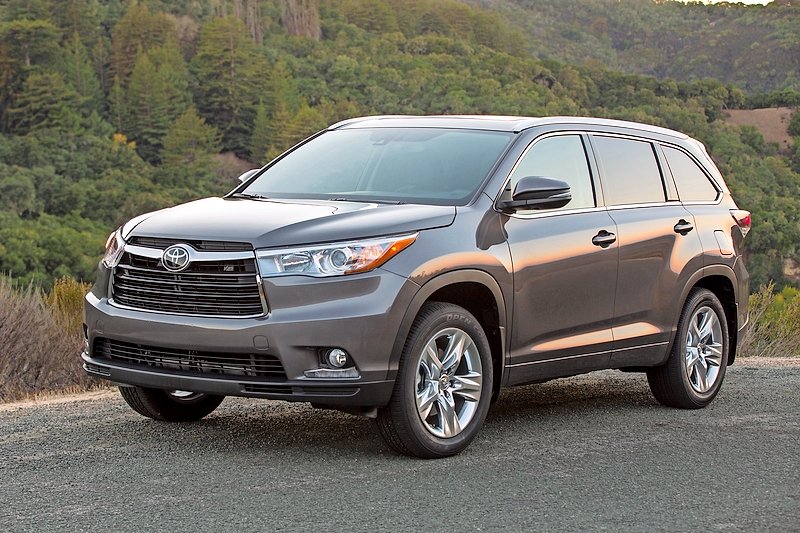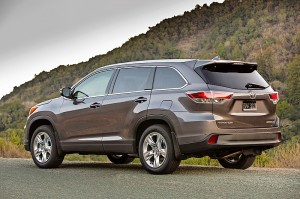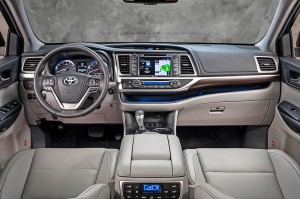All-Around Performer | 2015 Toyota Highlander
By Marc Schulhof
October 2015 View more For The Road
 If ever there were a vehicle that illustrates why many families have moved away from minivans and why crossovers are so popular, the all-purpose 2015 Toyota Highlander is it. Big enough for carpool duty and an extended family road trip? Check. High driver’s seating position? Check. Small enough for easy maneuverability and parking? Check. Available with all-wheel-drive? Available as a hybrid or with a choice of gas engines? Available with all manner of luxury and technology options? Check. Check. Check.
If ever there were a vehicle that illustrates why many families have moved away from minivans and why crossovers are so popular, the all-purpose 2015 Toyota Highlander is it. Big enough for carpool duty and an extended family road trip? Check. High driver’s seating position? Check. Small enough for easy maneuverability and parking? Check. Available with all-wheel-drive? Available as a hybrid or with a choice of gas engines? Available with all manner of luxury and technology options? Check. Check. Check.
Oh, and it drives like a champ, too—smooth acceleration and shifting, plenty of power and braking power, stable around corners, and up to 5,000 pounds of towing capacity. If you want or need three rows of seats and enough seatbelts for as many as eight, the Highlander deserves a spot on your shopping list.
Third-Generation Model
 Redesigned last year, this third-generation model looks nothing at all like its progenitor from long ago—essentially a Camry station wagon—but judging by how many of those are still plying the roads, Toyota’s reputation for quality is well-earned.
Redesigned last year, this third-generation model looks nothing at all like its progenitor from long ago—essentially a Camry station wagon—but judging by how many of those are still plying the roads, Toyota’s reputation for quality is well-earned.
Less boxy than the 2015 Honda Pilot, the Highlander finds a sweet spot in the size/shape matrix. This model is three inches longer than the last one, which pays dividends in terms of legroom and cargo room. The space behind the third row of seats is up by one-third, according to Toyota. The interior is wider, too, which makes the back rows more comfortable.
Interior Comfort
 The seats—especially trimmed in optional leather—are everything you would expect in the front row, pleasant perches in the second row, either as a bench or, more comfortably outfitted as two captains seats, and suitable mostly for children in the third. The third row is easily accessible for seating, the second row slides forward with one hand, and folds down in a snap for cargo.
The seats—especially trimmed in optional leather—are everything you would expect in the front row, pleasant perches in the second row, either as a bench or, more comfortably outfitted as two captains seats, and suitable mostly for children in the third. The third row is easily accessible for seating, the second row slides forward with one hand, and folds down in a snap for cargo.
Aside from being slightly larger, the Highlander’s cabin has nicer materials inside than in years past, and a multi-layered design with flowing lines and contrasting materials. The cabin is quieter, too.
In the “why doesn’t anyone else do that” category, the interior designers stashed a long horizontal shelf at the bottom edge of the front console running from just next to the steering wheel all the way to the passenger’s side door. It is ideal for smartphones, parking tickets, and paper maps. Just kidding about the maps—the optional touch-screen navigation system has that under control. Toyota also solved the perennial problem of where to stash your purse, messenger bag, or tablet, too. The cavernous center console can accommodate an enormous volume of stuff.
Under The Hood
With a choice of four-cylinder, V6, or hybrid engines, the Highlander covers all the bases. Most buyers will choose the V6, which also opens the door to all-wheel-drive as an option. If you choose the four-cylinder engine, you get front-wheel drive.
While the four-cylinder model is less expensive than the V6, the other reason to choose a smaller engine—better fuel economy—is not really part of the decision tree for the Highlander. The four-cylinder earns an estimated 20 miles per gallon in the city, 25 on the highway—compared to 19/25 for the V6 with front-wheel drive and 18/24 for the all-wheel-drive V6.
The 2015 Toyota Highlander challenges potential buyers with its long list of potential trims, engines, and drivetrains. The LE model starts things off at $29,765. The Hybrid Limited tops the Highlander’s base-price ladder at $47,850. In between, there are many potential paths to specifying just the right seven- or eight-passenger SUV.
Photo courtesy of ©Toyota Motor Sales, U.S.A., Inc.




